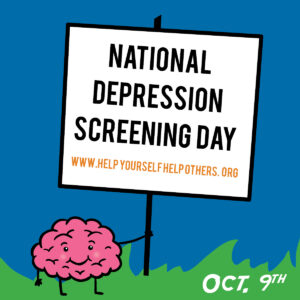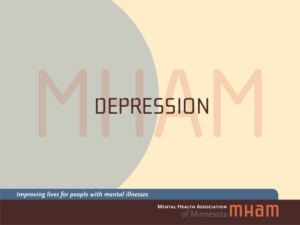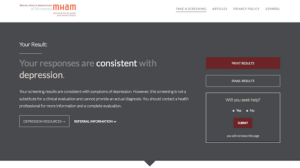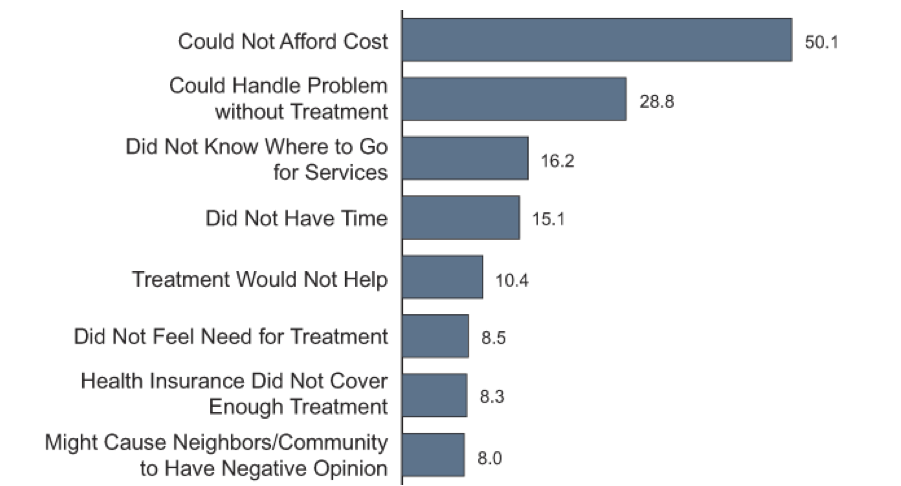Category Archives: Wellness
Holidays and Your Health
The holidays are upon us. For many people, this joyous time of year can also be very stressful. According to an online poll by the Anxiety and Depression Association of America, nearly three-quarters of people reported that the holiday season makes them feel very or a bit more anxious and/or depressed.
The following are a few tips* on how to manage some of the stresses that are often associated with the holidays.
- Set reasonable expectations and don’t expect the holiday season to be perfect.
- Practice healthy drinking habits. Alcohol is a depressant and can exacerbate feelings of stress and sadness. Too much alcohol can also interfere with healthy sleep and interrupt natural sleep cycles.
- Keep up your exercise regimen, as it will provide effective stress relief and productive alone time. A short daily walk can have a big impact.
- Set spending limits and stick to them. Over-spending during the holidays can lead to continued stress down the road.
- Treat your body well with balanced nutrition but don’t feel guilty when indulging during the holidays. Moderation is key and is a far healthier response to holiday treats than starvation.
- Create a space and time for yourself during family gatherings. Take a walk outside, find a quiet corner in the house, or make a quick trip to the store to gather your thoughts and relax.
- Plan any shopping and cooking in advance. Setting a schedule and making priorities will prevent too much from piling up at the last minute.
- Talk to someone. Seek support and affirmation of how your expectations for the season don’t always match with reality. A good listener and a little laugh can be great stress relievers.
Sometimes “holiday blues” are more than just passing emotions and can be something more serious like depression, anxiety, or a related disorder. If you have prolonged anxiety, sadness, or a mood that interferes with sleeping, eating or other usual activities, you may want to talk with a health professional.
*From Screening for Mental Health, Inc., “Help Your Community Deal With Holiday Stress”
October 9th is National Depression Screening Day
Depression is a common health condition that affects an estimated 1 in 10 U.S. adults. Thursday, October 9th, 2014, is National Depression Screening Day (NDSD). NDSD, developed by Screening for Mental Health Inc., brings awareness about depression and promotes online screenings for depression and other common mental heath disorders. MHAM has partnered with Screening for Mental Health, Inc. for the last 8 years to provide these screenings.
Why online screening for depression? Because online depression screening is effective. Results from a 2009 independent research study by the University of Connecticut, commissioned by Screening for Mental Health, states that depression screenings are effective in connecting at-risk individuals with treatment. The study showed that 55% of participants, who completed an online depression screening and who agreed to participate in a follow-up survey, sought depression treatment within three months of the screening.
Who can take the online screening? The online screening is made available to everyone visiting the MHAM website and is taken anonymously. This screening is not a substitute for a diagnosis, but it will help determine whether or not a consultation from a health professional would be helpful. The self-assessment screens for depression and also for bipolar disorder, post-traumatic stress disorder, and generalized anxiety disorder.
Are you unable to take the screening on October 9th? No problem. The online screening is available 24/7, 365 days of the year! Take a few minutes to complete this free and anonymous mental health screening.
For more information and resources on depression visit our website at: https://mentalhealthmn.org/be-informed/mental-health-resources/depression
How are you feeling?
20 percent of adults will experience a mental illness in any given year. Most mental health conditions can be treated effectively with appropriate mental health treatment. Unfortunately, of those who do experience a mental illness, many do not get help.
For the past 8 years, MHAM has been providing online mental health screening for common mood and anxiety disorders. In those eight years, we have seen the number of completed surveys increase from a couple of thousand, to nearly 17,ooo in just the last year. An online screening is a quick assessment that you can do at anytime and can help you move closer toward improving your health.
The online screening is not diagnostic, but it will help you determine whether or not a consultation from a health professional would be helpful.
The online screening can be accessed via desktop, tablet, or smartphone, and it is free and anonymous.
It only takes a few minutes to complete the screening. First, select the statement that fits how you have been thinking or behaving. Then, answer the brief set of questions about yourself and how you are feeling.
When you are finished with your assessment, you will receive an explanation about your moods and behaviors. From these results and recommendations, it will help you decide if you need to contact a health professional. In addition, you will have access to informational materials and other resources about what you can do to get help.
Taking a few minutes to assess how you are feeling can help you take that next step. Take an online screening now!
Meditation for mental health
Many people believe that the goal of meditation is to sit still and stop thinking. In fact, trying to turn off thinking is not only pointless, but also very frustrating for beginning meditators, and can ultimately counteract the positive effects of a meditation practice. The human mind thinks, just as the ears hear and the nose smells. Allowing this process to unfold without judgment can help cultivate more calm and emotional resiliency on and off the meditation cushion.
New studies are continuously being published about the health benefits of meditation and its effectiveness in treating anxiety and depression. In a January Forbes article, contributor Alice G. Walton points out that meditation can be just as effective as medication in treating certain cases of depression. “On a purely biological level, MRI studies have shown that meditation is linked to a reduction in activity in the amygdala, the brain area that governs the stress response, and to reduced activity in the default mode network, the brain network that’s “on” when your mind is wandering from thought to thought, which is often linked to feelings of unhappiness and stress.”
Of course, no one should ever stop taking medication without consulting their doctor, but the beauty of meditation is that it has no side effects and can be used along with medication, therapy, and other treatments that are already in place. It isn’t necessary to meditate for hours at a time to feel the calming benefits of the practice either. In fact, meditating for 10 minutes first thing in the morning, on your lunch break, or before you fall asleep at night should feel good immediately. You can even practice walking meditation on your way from the car to the grocery store. Meditation can easily be incorporated into a busy life and the practice can always be lengthened and deepened over time.
Try this simple meditation practice for 10 minutes. Set a timer and find a quiet place to sit where you won’t be distracted or interrupted.
Sit comfortably while keeping your spine erect. You may want to sit up on a few pillows on the floor or on the edge of a chair with your feet touching the ground, but you can even meditate lying down if sitting doesn’t feel comfortable to you.
Take three deep breaths in and out of your nose focusing your attention on the air entering your body and filling up your lungs, and then slowly leaving your body. Pay so much attention to the breath that you can sense the difference in temperature of the in and out breaths.
Now place your palms, face up or down on your thighs and continue to breathe naturally. Try not to control the breath, but simply notice the breath as it enters and leaves your body. If your mind begins to wander (and it most likely will) simply return your attention to the breath as soon as you notice. Remember: thinking is normal. The key here is to notice thoughts when they happen and then gently steer your attention back to the breath.
Once this practice starts to feel comfortable, you can increase your sitting time by a few minutes each day, each week, or each month. Start slowly and be gentle with yourself.
These local meditation centers offer support, community, and education:
Common Ground Meditation Center
2700 East 26th Street
Minneapolis, Minnesota 55406
(612)-722-8260
Minnesota Zen Meditation Center
3343 East Calhoun Parkway
Minneapolis, MN 55408
612-822-5313
http://www.mnzencenter.org/
Mind Roads Meditation Center
2046 St. Clair Avenue
St. Paul, MN 55105
Telephone: 651-225-1443
http://mindroads.com/
The Metamorphosis Center
1301 East Cliff Road, Suite 105
Burnsville, MN 55337
(612) 730-2250
http://www.themetamorphosiscenter.net/
Men and Depression
In observance of National Men’s Health Week, June 9th through June 15th, we are highlighting some information and resources on men and depression.
More than 6 million men in the U.S. have depression each year, according to the National Institute of Mental Health. Not everyone will experience the same symptoms. For men, symptoms of depression may include feeling very tired and irritable, and a lose of interest in their work, family, or hobbies. Other symptoms of depression may include:
> Persistent sad, anxious, or “empty” mood
> Feelings of hopelessness, pessimism
> Feelings of guilt, worthlessness, helplessness
> Decreased energy, fatigue, being “slowed down”
> Difficulty concentrating, remembering, making decisions
> Difficulty sleeping, early-morning awakening, or oversleeping
> Appetite and/or weight changes
> Thoughts of death or suicide; suicide attempts
> Persistent physical symptoms
There are different treatment options that can help, which may include medication, therapy, or combination of both. With effective treatment, the symptoms of depression will gradually get better. Like any other health condition, early treatment is important.
For more resources and information, please visit:
Twitter Chat on Men and Depression – June 10, 2014
To learn more about the symptoms, causes, and treatments for depression in men, please join the National Institute of Mental Health (NIMH) for a Twitter chat during National Men’s Health Week on Tuesday, June 10, 2014, from 1 p.m. to 2 p.m. CT. NIMH expert Matthew Rudorfer, M.D., chief of the Somatic Treatments Program, will be answering questions related to men and depression during the chat.
http://www.nimh.nih.gov/news/science-news/2014/nimh-twitter-chat-on-men-and-depression.shtml
General Information on Men and Depression – National Institute of Mental Health
Get information on signs and symptoms of depression as it pertains to men, available treatment, and seeking help for depression.
http://www.nimh.nih.gov/health/topics/depression/men-and-depression/index.shtml
Online Mental Health Screening
The Mental Health Association of Minnesota has partnered with Screening for Mental Health, Inc. to provide free online screening for mood and anxiety disorders. This anonymous online assessment screens for depression, bipolar disorder, generalized anxiety disorder, and post-traumatic stress disorder. This screening is not a substitute for a diagnosis, but it will help determine whether or not a consultation from a health professional would be helpful. If you want to follow-up with a health provider, but have limited or no health insurance, MHAM can help find a sliding fee clinic or other medical coverage options. To speak with an advocate, call 651-493-6634 or 800-862-1799.
https://mentalhealthmn.org/be-informed/education-programs/online-screening-for-mood-and-anxiety-disorders
Get Help. Get Well.
Get Help Get Well helps people understand what to expect when seeking mental health care for the first time. Get Help Get Well includes information on…
> The first steps to obtaining care; healthcare providers to see initially; and factors to consider when seeking a healthcare provider.
> What may occur in the initial appointment; questions that may be asked by the health professional; and questions the patient may want to ask their health provider
https://mentalhealthmn.org/be-informed/get-help-get-well
Yoga for Anxiety and Depression
by MHAM Volunteer Stefanie Motta
As anyone who has experienced anxiety or depression knows, support from friends, family, a therapist, or an advocate is crucial. Yet, learning skills to support ourselves through difficult times can empower us to heal throughout an entire lifetime. One of the most effective self-care practices that I have found is yoga. This ancient Indian practice has been embraced around the globe as a system for achieving physical, mental, and emotional health, and research is now showing that regular yogic practice can alleviate symptoms of anxiety and depression.
After healing from her own depression using yoga and meditation techniques, yoga teacher and author Amy Weintraub, has dedicated her career to helping others feel better. In an interview for the May 2013 issue of Yoga Journal, Weintraub explains why yoga can be an effective component of any mental health treatment plan, “It lowers cortisol, the stress hormone; it activates the parasympathetic system, which is calming; and it deactivates the limbic brain, which is overactive in people who are very anxious or have a history of trauma.”
One of the most noticeable effects of my yoga practice is the sense of calm and peace that come from deep breathing along with the physical postures. When we are stressed, anxious, or depressed, our breathing often becomes shallow and constricted, which can trigger more stress in turn. In addition to the regular deep breathing of a yoga practice, there are many additional yogic breathing techniques that can help us relax when we feel triggered by a stressor or a depressing thought.
“Bee breath” which is named after the buzzing sound that bees make, is one of my favorite yogic breathing techniques. It is instantly calming, and you can try it any time you feel anxious or your mind is spinning. Because of the sound you’ll make, you may want to find a quiet, private place to practice this technique. Sit, or stand comfortably and take a slow, deep breath in and out, allowing your shoulders to relax away from your ears. Now with your eyes closed (if that feels comfortable) take another deep breath in through your nostrils, seal your lips, and breathe out through your nose while making the sound of the letter M until you need to inhale once more. You will make a buzzing sound in the back of your throat each time you exhale through your nose. Repeat this for a few minutes or as long as it feels good.
According to Weinbrub, “The message of yoga is that deep within you, you are whole and healed, no matter what is going on in your life.” Tapping into that mindset and empowering ourselves with tools like yoga can help each of us to find healing on our own path.
What to Expect at Your First Appointment
Seeing a health professional for any type of health condition can be daunting. Being prepared before an appointment can alleviate some of that pre-appointment angst and can create better outcomes after the visit. Below are a few possible questions that may be asked from your health professional and questions that you may want to ask during that appointment. Having some of these written down before your appointment may be helpful.
The following are some questions that may be asked by the health professional you are seeing:
- What symptoms are you experiencing or have experienced, frequency and intensity, and how has this affected your daily life/routines?
- Is there a past history of mental health issues?
- Any family history of mental health issues?
- Any substance abuse – past and present?
- What prescribed medications, over-the-counter medications, dietary and herbal remedies, and vitamins or minerals are you taking?
You may want to ask your health provider about the recommended course of treatment and what options are available to treat your health condition, along with expectations of each.
If you are prescribed a medication, you may want to ask:
- What the medication is for and how is it going to help you?
- How and when should you take it and how much should you take?
- How long will you be on this medication?
- What should you do if you miss a dose?
- Will it interact with other prescription or over-the-counter medications, dietary or herbal remedies, vitamins or minerals?
- Should it be taken with food? What food or drinks should you avoid while taking this medication?
- What are the side effects of this medication and what should you do if you experience them?
- Who should you contact if you have any problems or questions about the medication(s)?
For more information on seeking help, visit Get Help, Get Well on the MHAM website.
Contacting a Health Provider About a Mental Health Condition
When symptoms of a mental health condition emerge, knowing whom to contact can be somewhat confusing. Below provides some information on who to contact first, type of professionals one might see, and tips on seeking a provider.
If you have health insurance, you can either contact your health care provider or contact your insurance provider for covered health providers. If you do not have insurance or you have limited coverage, you may want to call your county to see if you qualify for services for mental health treatment.
Depending on the type of coverage you have and what your health provider recommends, the type of health professional you see initially may vary.
Primary care providers or general practitioners can provide the initial assessment to see if you are experiencing a mental health condition. If necessary, they can provide medications for certain types of mental health conditions and can also provide a referral to a mental health professional for further evaluation and treatment. They may also utilize labs or medical tests to rule out any contributing health issue that may be causing your symptoms.
There are many different types of mental health professionals and many types of therapies. The type of therapy will often depend on each individual and the condition(s) that need to be addressed. Certain mental health professionals can also prescribe medications if needed.
Things to consider or to ask when seeking a provider:
- Review information (bios) about available health professionals. What are their specialties? How available are they at the desired location?
- Do you have any specific requests for finding a health professional? (culture specific, gender specific, faith-based, prior military background, etc.)
- Your appointment may be set up by a scheduler. Be sure to let them know if you have any specific requests.
- Would it be helpful to have a trusted friend or family member help you make the first appointment? For some, a loved one may provide that needed encouragement and support for seeking care.
For more information on seeking help, visit Get Help, Get Well on the MHAM website. Do you have more questions about contacting a health provider? Please contact us.
* * * * * * * * * * *
If you are in crisis or thinking about harming yourself, or know someone who is, tell someone who can help immediately.
- Do not leave your friend or relative alone, and do not isolate yourself.
- Call 911 or go to a hospital emergency room to get immediate help, or ask a friend or family member to help you do these things.
- Call the toll-free, 24-hour hotline of the National Suicide Prevention Lifeline at 1-800-273-TALK (1-800-273-8255); TTY: 1-800-799-4TTY (4889) to talk to a trained counselor.
Getting Help
Most mental health conditions start to develop early in a person’s lifetime. Half of adult mental health conditions begin before age 14, and three-quarter of mental health conditions begin before age 24. Getting help for a mental illness is often delayed. In the U.S. the average duration of delay in treatment from onset of symptoms for mood disorders is 4 years and for anxiety disorders it is 23 years. If left untreated, many mental health conditions can worsen and lead to increased impairment in daily activities and functioning.
Stigma and barriers to treatment are often the causes for these delays. Results from the latest annual NSDUH survey of mental health findings show reasons why people with mental illnesses did not seek care. Below are the top 10 reasons from that survey (click here to see all responses).
* Based on the percent of adults with any mental illness that did not receive mental health treatment in the past year (2011). From the Substance Abuse and Mental Health Services Administration, Results from the 2011 National Survey on Drug Use and Health: Mental Health Findings, NSDUH Series H-45, HHS Publication No. (SMA) 12-4725. Rockville, MD: Substance Abuse and Mental Health Services Administration, 2012.
Getting help for a mental illness can be difficult. For those who are initially seeking mental health care for the first time, our website addresses some of these barriers. Get Help. Get Well, provides some information on who to contact first and what to expect at your first appointment. Talking with a trusted friend, family member, or someone else that you feel you could confide with can provide that needed support as well. Contact an MHAM advocate to ask questions you may have pertaining to seeking mental health care treatment.






